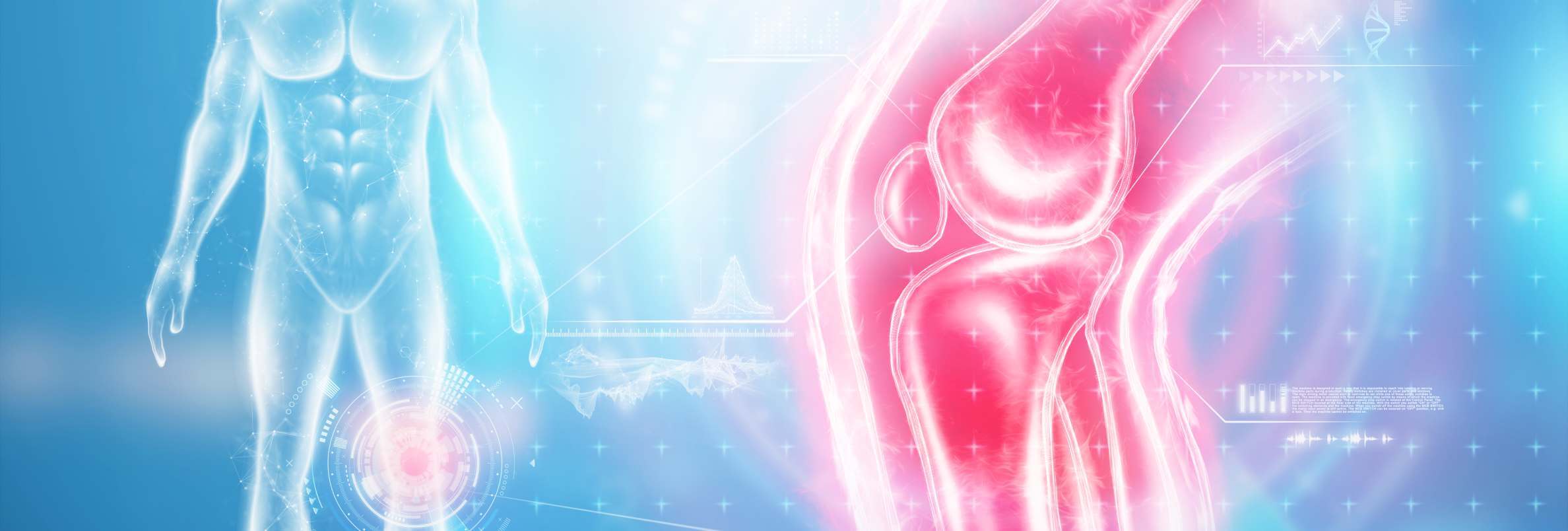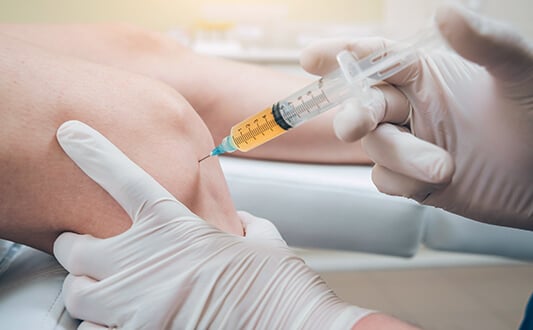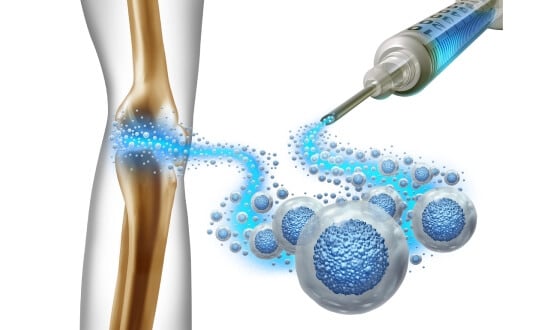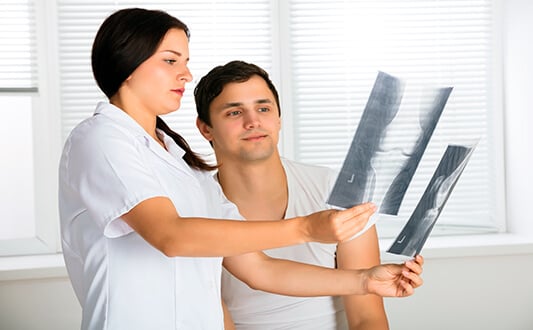Ironically, two current trends are leading to an increase in the prevalence of knee and hip cartilage lesions. The first is sedentary work and a sedentary lifestyle that worsen the tropism of the joints. The second, however, is intensive sports, often done by unprepared people.
Minor lesions progress over time and eventually lead to osteoarthritis because the cartilage cannot practically be restored due to the fact that there are no blood vessels in it and its cells multiply slowly. Doctors at German hospitals stimulate cartilage regeneration, restoring damaged joints without arthroplasty.
Microfracture and nanofracture for cartilage repair
The simplest technique that has been practiced for several decades is cartilage microfracture. This is an arthroscopic procedure, during which a surgeon examines the joint from the inside and removes its damaged components (loose bodies or destroyed areas of the cartilage). In this case, the doctor necessarily damages the blood vessels of the subchondral bone.
Once the procedure is completed, a blood clot rich in fibrin and growth factors will be formed in the defect area, due to which the cartilage can be gradually restored. The new tissue is somewhat different in its properties because it is not so elastic, but it is quite capable of performing its function. The microfracture procedure is therefore indicated for physically active patients with a small area of damage that reaches the bone and for those with cartilage instability.
For a full restoration of the joint, rehabilitation is required. Rehabilitation at German hospitals includes several successive stages. These are as follows:
- Early postoperative stage (up to 6 weeks). Training is done with passive movements in the joint, so the joint is not loaded.
- Late postoperative stage (within 7-12 weeks). At this very point, patients begin to make active movements to restore the function of the muscles of the limb.
- The muscle strength recovery stage (within 13-18 weeks) begins when the muscle strength index is greater than 85% of a healthy limb.
- The stage of restoration of sports skills (after 19 weeks), after which patients can return to sports loads.
Provided that the procedure is well performed and the patient undergoes full rehabilitation, it will help get rid of a number of symptoms, such as:
- Periodic joint swelling.
- Pain when walking for a long time or climbing stairs.
- Instability of the joint function. For example, the knee may spontaneously bend under load.
- Fixation of the joint in one position and limitation of its mobility.
- Noise during movement in the joint.
AMIC – Autologous matrix-induced chondrogenesis
For patients with extensive defects of the cartilage tissue (1-2 cm2 and more) and the underlying articular bone, German orthopedists use autologous matrix-induced chondrogenesis (AMIC). This is an advanced technique for regenerating a joint using the patient's blood and stem cell components. Over 10 years of practical use, AMIC has proven its safety and effectiveness in the treatment of arthrosis and other joint pathologies.
In the course of treatment, surgeons may use arthroscopy or a minimally invasive anterior approach. A doctor examines the joint, removes loose bodies, performs the resection of the damaged menisci, and conducts all the necessary manipulations to make the edges of the defect smooth and even, which makes the procedure the most effective.
This is followed by the microfracture procedure, during which a surgeon makes holes in the bone at a distance of 4-5 mm from each other. The number of holes depends on the area of the defect. Blood with fibrin and the most important component, stem cells, will flow through these holes to the defect area. After that, the zone is closed with a Chondro-Gide® matrix, fixing it with fibrin glue.
The outer side of the Chondro-Gide® matrix is dense, so it does not let blood and stem cells into the joint. The inner side is loose and porous, so it creates ideal conditions for fibrin fixation and stem cell multiplication. Simply put, Chondro-Gide® is a framework on which young cartilage will quickly form.
The AMIC technique may be effective for the following patients:
- Patients between the ages of 18 and 55 (for those aged over 55, additional examinations are required).
- Patients with cartilage and subchondral bone lesions.
- Patients with lesions of III and IV stages.
- Patients with a defect area greater than 2 cm2.
- Patients with normal cartilage outside the defect.
The treatment is completed with a course of rehabilitation. This includes the following:
- Week 1: support on three points while walking with crutches and wearing an orthosis.
- Weeks 2-6: daily passive joint training for 2-6 hours, water gymnastics, and swimming.
- Week 6 and beyond: the load is gradually increased to full, and movements are only limited by pain.
Following rehabilitation, the patient's pain disappears, and, according to the ICRS (International Cartilage Repair Society) classification, the cartilage condition improves significantly based on follow-up examinations.
CartiFill – three-dimensional chondroconductive collagen matrix
The three-dimensional chondroconductive collagen matrix CartiFill is an improved version of the two-layer Chondro-Gide® matrix. This is a 3D framework made of highly purified collagen, which additionally contains growth factors and nutrients.
After the microfracture procedure, the CartiFill collagen matrix forms the framework of the future cartilage, in the sections of which the patient's stem cells are fixed. CartiFill components help stem cells multiply and specialize into chondrocytes, cartilage tissue cells. The process imitates the natural regeneration of articular cartilage, but it is accelerated several tens of times. After its completion, CartiFill biodegrades and is excreted from the body on its own.
CartiFill is commercially produced and does not require any prior tissue sampling from the patient. This makes treatment easier and less traumatic.
In general, the CartiFill three-dimensional chondroconductive collagen matrix can be used not only during the AMIC procedure but also during autologous chondrocyte implantation, which will be described below.
Autologous chondrocyte implantation (ACI)
Autologous chondrocyte implantation (ACI) is a technique that overcomes the problem of the extremely slow reproduction of cartilage cells by growing them in the laboratory. At the same time, the source material is a small amount of the patient's own cartilage, so young chondrocytes have 100% biological and genetic compatibility with their body. Donor cartilage is taken from the functionally inactive areas of the joint, which are subjected to the least load.
The average amount of donor cartilage is 200-300 mg. For comparison, this is less than 1 cubic millimeter of tissue. With the help of enzymes, laboratory workers isolate cartilage-forming cells, or chondrocytes.
Chondrocytes will be cultured in the laboratory for 2-3 weeks. When their number reaches the required levels, the laboratory staff will carry out a purification step, check the viability of the cells, and send the resulting drug to the doctor in the form of a suspension. German laboratories strictly follow good manufacturing practice (GMP) regulations, which guarantee the high quality of the drug.
Young chondrocytes are administered into a cartilage defect using an intra-articular injection. Following that, the defect is closed with a periosteum (provided that this is a classic version of the procedure). A modern and improved modification of ACI is MACI, a procedure using the already familiar collagen matrices Chondro-Gide® and CartiFill. When performing MACI, technologists plant young chondrocytes into collagen matrices, and natural cartilage is formed at the site of the defect after growth and the formation of connections between them.
Both ACI and MACI are minimally invasive arthroscopic procedures with high safety and efficacy rates that are actively practiced at German hospitals.
Osteochondral autograft transplantation, ОАТS
Other names for this method, which clearly reflect its essence, are mosaicplasty or bone and cartilage transplantation. During the OATS procedure, the surgeon removes tissue cylinders from the donor joint that contain healthy cartilage and part of the bone that feeds it. After the transplantation of such cylinders into the affected joint, its surface begins to resemble a mosaic.
When performing OATS, there is no need to cultivate cartilage cells in the laboratory for a long time and plant them on a special membrane because viable sections of the patient's own cartilage are implanted into the defect zone. The procedure has the following stages:
- A diagnostic examination and selection of a donor joint. This is usually a healthy joint that does not have a pronounced physical load.
- Minimally invasive sampling of donor material.
- Preparation of the affected joint and removal of the destroyed areas of cartilage and bone. The transplant area must be clean and physically stable for donor material engraftment.
- Implantation of donor material is another minimally invasive procedure after which patients can go home on the same day. They spend an average of 1-2 hours in the operating room.
- Rehabilitation. This is the longest stage in OATS, during which the patient goes from joint immobilization to a gradual increase in the load on it and complete restoration of joint function.
Osteochondral autologous transplantation is suitable for people with knee pathologies, and it is less commonly performed on the hip, shoulder, and elbow joints. After the completion of the procedure, pain is reduced, mobility improves, and the patient can perform more active movements. Treatment outcomes are preserved for a long time.
Treatment planning in Germany
The patient's own cartilage repair, preferably with minimally invasive procedures, is a priority for German orthopedists. Thanks to the active use of such techniques, arthroplasty has long been a last-line treatment.
The second cornerstone of treatment for joint diseases is rehabilitation for the correct functioning of the muscles and the preservation of the repaired cartilage in the future. It is the combination of surgical techniques with full-fledged rehabilitation that allows doctors in Germany to achieve excellent results.
When planning your trip, it is important to choose a hospital and a doctor who will objectively recommend the best treatment method and successfully carry it out. It should be noted that different hospitals specialize in different treatment methods. For example, the Orthopedic Clinic Freiburg has the best success rates for autologous chondrocyte implantation in the knee and hip joints.
The Booking Health website presents all specialized hospitals, and here you can find information about treatment methods, the cost of comprehensive medical care programs, and prices for specific procedures. If you find it difficult to choose, a medical advisor from the Booking Health company will help you make an informed choice.
Booking Health is your opportunity to undergo treatment at a German hospital without any doubts and organizational worries because the Booking Health team will take care of:
- Selection of a hospital and an orthopedic surgeon
- Communication with an attending physician and organization of a preliminary remote consultation
- Preparation of a preliminary treatment and rehabilitation program
- Control of treatment costs and the ability to undergo treatment at prices for German citizens (saving up to 50%)
- Making an appointment at the hospital without a long wait
- Independent control of all stages of treatment
- Assistance in buying and forwarding medicines
- Communication with the hospital and the doctor upon the completion of treatment
- Control of invoices from the hospital
- Organization of follow-up diagnostic examinations
- Booking a hotel room, airline tickets, and transfer
You will also be provided with an interpreter and a personal medical coordinator for the entire period of your treatment in Germany.
Article menu:
Don't know where to start?
Contact Booking Health






